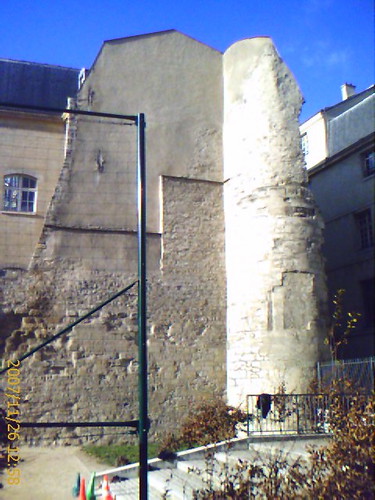In Paris you’ll find almost always in every direction flavours of the Belle Epoque. You’ll never have to look much further to find the earlier 18th century, or indeed the 17th, but pieces of really old Paris – the medieval origins, are thin on the ground. Yet if you look hard around the 4th arrondissement, there are some fascinating survivors.
First up, and centrally from the medieval viewpoint, are the city’s walls. Not wanting to leave Paris unprotected when he went crusading, Philippe Auguste in 1190 started build walls on right bank and from 1200 started on the left. They enclosed together 253 hectares with space for the inhabitants, and, of course, the vineyards essential to human survival. (London was much smaller, not having the same idea of “essentials”.)
And these were serious defensive measures – every 70m reinforced with a rampart that stood 9m high and 3m in diameter. Yet a scant two centuries later in the reign of Charles V the fortifications were lost except for a few fragments.
The biggest of these is outside the Lycee Charlemagne. You’ll find it at the corner of the Rue des jardins saint-paul and the Rue de l’ave. (Beside is the Village Saint Paul, a fun collection of arts workshops and antique bric a brac shops arranged around a central courtyard.)
 “>
“>If you are looking for more really old paris head a bit further west, to the Rue francois macon, where two rare medieval wood-framed houses survive. These date to the 16th century in main structure but have remnants of 14th-century cores.
These were restructured after a 1508 royal decree which directed that upper floors not be galleried out over the street, because of the risk of them causing road accidents. In 1607 there was a directive to cover over wood to reduce fire risk (an example London would not follow until it was too late). These homes were restored to the original, bare-wood form in the 20th century.
Just down the road at the Rue du grenier sur l’eau is an example where the cantilevering survives, and the uneven form suggests a more original structure. Half close your eyes, squint a bit, and you might be back in the glory days when carts rumbled past this spot on the way to building two of the human race’s glories, the Sainte-Chapelle and Notre Dame.